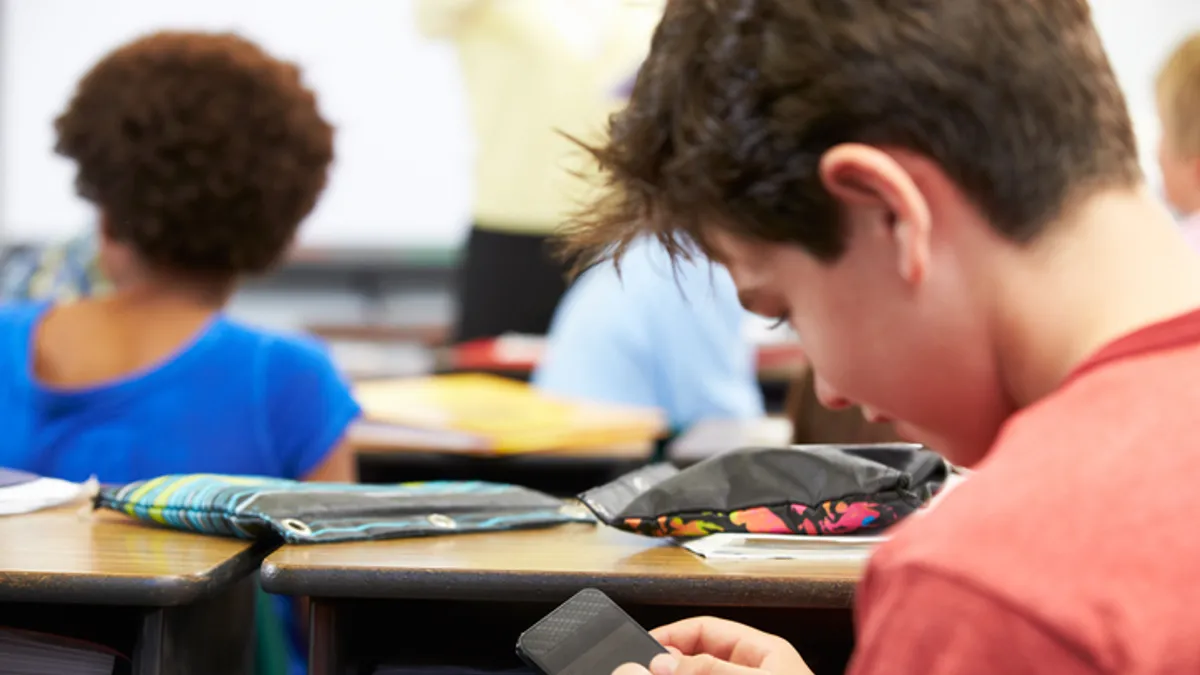On Tuesday, the K-12 sector got yet another sobering reminder of the pandemic's drastic, negative and far-reaching impact on student learning — a grim reality it has grappled with in the past few years.
As educators continue to address these impacts through learning recovery measures, the latest results for the Nation's Report Card released Tuesday further illuminate the extent to which the COVID-19 left its mark.
According to the results released by the U.S. Department of Education's National Center for Education Statistics, high schoolers are graduating with weaker math and reading skills as the gap between higher and lower-performing students widens in most areas. The results also show that the pandemic impacted 8th grade science achievement.
“Today’s NAEP results confirm a devastating trend: American students are testing at historic lows across all of K-12," said U.S. Education SecretaryLinda McMahon. "At a critical juncture when students are about to graduate and enter the workforce, military, or higher education, nearly half of America’s high school seniors are testing at below basic levels in math and reading."
As the education community reverberates with Tuesday's news, we've broken down what you need to know about the most recent National Assessment of Educational Progress results.
What do the results really mean?
The results show a 3-point decrease for 12th graders in both math and reading compared to 2019. The low scores seen in both core subjects for high schoolers in 2024 were even below scores almost two decades earlier in 2005 for math and below scores from 1992 for reading.
In fact, the average 12th grade math score is the lowest score ever reported for 12th grade, with 45% of students not even showing basic skills — the highest portion of students to ever fall below basic proficiency, according to NCES. That means almost half of the nation's students can't even apply single-step percentages to solve real-world problems, for example.
Less than a quarter — only 22% — of 12th graders scored at or above proficient in math, down 2 percentage points from 2019.
Overall, in 2024, only a third of 12th graders were considered academically ready for entry-level college math coursework, down four percentage points from 37% in 2019.
Similar results were seen in 12th graders' reading achievement. Like in math, the largest percentage ever — 32% — scored below basic level reading. That means they likely cannot locate and identify relevant details in a text in order to support literal comprehension.
Only 35% of 12th graders were proficient in reading, down 2 percentage points from 2019.
Overall, a smaller portion of 12th grade students were considered academically prepared for college-level reading coursework, at 35% in 2024 versus 37% in 2019.
Tuesday's NAEP results also showed a 4-point drop in science for 8th graders, who were in early elementary grades when COVID-19 shut down schools. More than a third, or 38%, of 8th graders couldn't meet basic performance, meaning they likely cannot recall, for example, that plants need sunlight to grow and reproduce.
That's the highest percentage of students since 2009 to score that low.
“Today’s release of the Nation’s Report Card in science underscores what we continue to see in the data: the pandemic left deep and uneven impacts on student learning across subjects, and science was no exception," said Susan Kowalski, lead research scientist at NWEA.
The scores mean that in science — as in other subjects — students "face a steep climb to recover lost ground and return to pre-pandemic levels of achievement," said Kowalski.
What about achievement gaps?
Gaps widened between the highest- and lowest-performing students, except for in 12th grade reading.
The lowest performers, or students scoring at just the 10th percentile, saw declines in 8th grade science and 12th grade math and reading. These trends pre-dated the pandemic, according to NCES, but worsened since then.
In fact, while there are drops in achievement overall, they were largely driven by big declines among the lowest-performing students, according to Martin West, vice chair of the National Assessment Governing Board, which sets policy for NAEP.
Here are some takeaways on the achievement gaps:
- The gap between the highest- and lowest-performing students in 12th grade math is wider than in all previous years.
- In reading, the gap between the highest- and lowest-performing students is wider than in all previous years, outside of 2019.
- The gender gap for students in science — previously considered closed, according to some measures — re-emerged in 2024, with male students ahead of female students by 2 points.
Are the results really that bad?
Parents, lawmakers, and policy and assessment experts are concerned with the latest Nation's Report Card results.
The National Parents Union called the results a "five-alarm fire for America's children and their future" in a Tuesday statement about the results. "Millions of young people are leaving school with fewer skills, less knowledge, and dimmer prospects than the generations before them."
"If policymakers and education leaders fail to act now, students — and employers — will feel the impact of declining skills and knowledge gaps as the global workforce becomes more and more competitive," said former North Carolina Gov. Beverly Perdue, who chairs the NAGB. "That bodes badly for them and badly for our country."
While the education community is concerned that 12th graders may be less prepared than in previous years for life after a diploma, however, surveys show an uptick in 12th graders who report being accepted to a four-year college, compared to 2019, according to NCES.
"The latest NAEP results are sobering, though not surprising. With 12th grade NAEP, some caution is warranted since seniors may not always give the test their full attention," said Dale Chu, assessment expert and independent education consultant, in an email to K-12 Dive. "Still, the 'worst reading scores ever' headline is hard to dismiss."
What’s the solution?
Education and assessment experts are calling for more school supports.
Perdue said the results show "a clear story that tells us students need more support to thrive in school and succeed across core subjects and across grades."
National Association for Secondary School Principals CEO Ronn Nozoe agreed that "too many students still aren’t getting the support they need to succeed." However, Nozoe said policymakers should help school leaders boost not only test scores but also mental health services, school staffing and retention, and academic resources.
Kowalski said in a statement the results require "sustained investment in strategies that work" like integrating reading and science instruction in the early grades.
In fact, literacy should be embedded across subjects to encourage systemic change, according to Miah Daughtery, vice president of advocacy, literacy policy and government affairs for the NWEA.
"They also suggest that education leaders and policy makers should rethink support for older students," Daughtery said in an email. Change may also require using age-appropriate assessments, investing in teacher training, and rethinking how instructional time is used to support adolescent readers.
Whether state and federal leaders follow these suggestions remains to be seen.
"The real test now is whether policymakers respond with urgency, doubling down on transparency, accountability, and meaningful interventions, rather than lowering expectations or looking the other way," said Chu.
What are policymakers suggesting?
Policy leaders used Tuesday's results to highlight their own priorities.
McMahon, for example, echoed the Trump administration's stance that current and previous levels of education funding have scarcely made a dent in assessment results and that education investments should be state-level decisions.
"The lesson is clear. Success isn’t about how much money we spend, but who controls the money and where that money is invested," said McMahon. "That’s why President Trump and I are committed to returning control of education to the states so they can innovate and meet each school and students’ unique needs."
Democrats and Republicans agreed that the recent results were concerning and said they were committed to improving student outcomes, but the two sides pointed fingers at one another and proposed different solutions.
House Education and Workforce Committee Chairman Tim Walberg, R-Mich., blamed the Biden-Harris administration's "unworkable one-size-fits-all regime that expanded federal bureaucrats’ control," pandemic-era school closures, teachers unions and Democrats who he said "caused catastrophic damage to students’ educational outcomes and success."
“Unfortunately, instead of responding with the urgency that our nation’s learning crisis demands, the Trump Administration is pushing forward with its reckless efforts to dismantle the Department of Education," said House Education and Workforce Committee Ranking Member Bobby Scott, D-Va. "Eliminating the very agency responsible for supporting public schools and enforcing civil rights protections of students will only deepen the achievement gaps identified by this assessment."




















